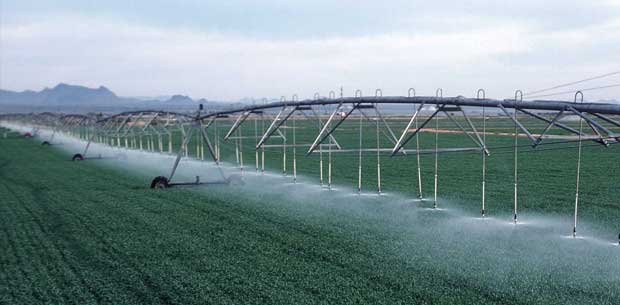
Irrigation Efficiency is the ratio of the water output to the water input, and is usually expressed in terms of percentage. Input minus output is nothing but losses, and hence, if losses are more, output is less and therefore efficiency is less. Hence, efficiency is inversely proportional to the losses. Water is lost in irrigation during various processes and therefore, there are different kinds of irrigation efficiencies, as given below:
Efficiency of water-conveyance: It is the ratio of the water delivered into the fields from the outlet point of the channel, to the water entering into the channel at its starting point. It takes the conveyance or transit losses into consideration.
Efficiency of water- application: It is the ratio of the quantity of water stored into the root zone of the crops to the quantity of water actually delivered into the field. It may also be called on farm efficiency, as it takes into consideration the water lost in the farm.
Efficiency of water-storage: It is the ratio of the water stored in the root zone during irrigation to the water needed in the root zone prior to irrigation (i.e. field capacity – existing moisture content).
Efficiency of water use: It is the ratio of the water beneficially used, including leaching water, to the quantity of water delivered.
Uniformity coefficient or Water distribution efficiency: The effectiveness of irrigation may also be measured by its water distribution efficiency. The water distribution efficiency represents the extent to which the water has penetrated to a uniform depth, throughout the field. When the water has penetrated uniformly throughout the field, the deviation from the mean depth is zero and the water distribution efficiency is 1.0.

